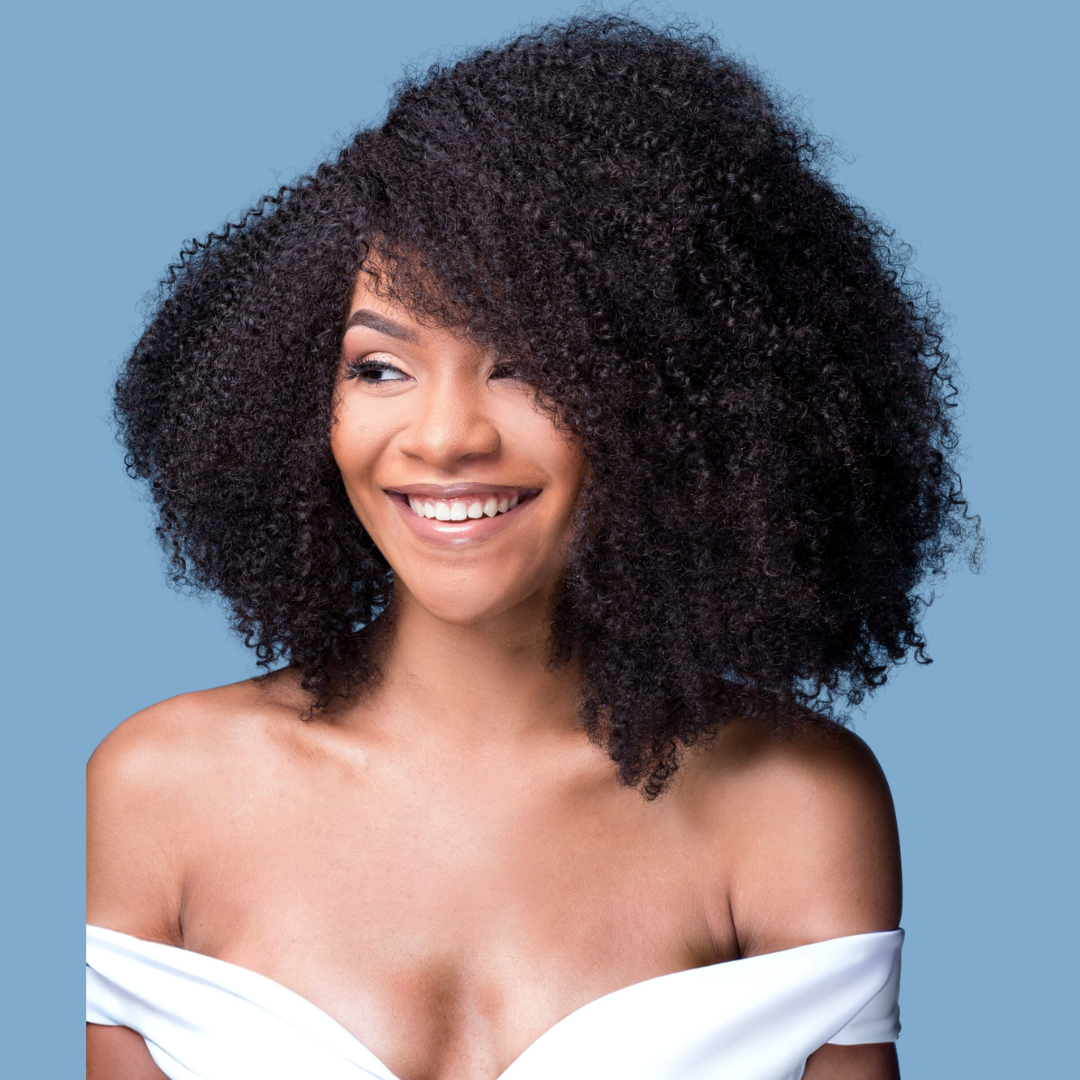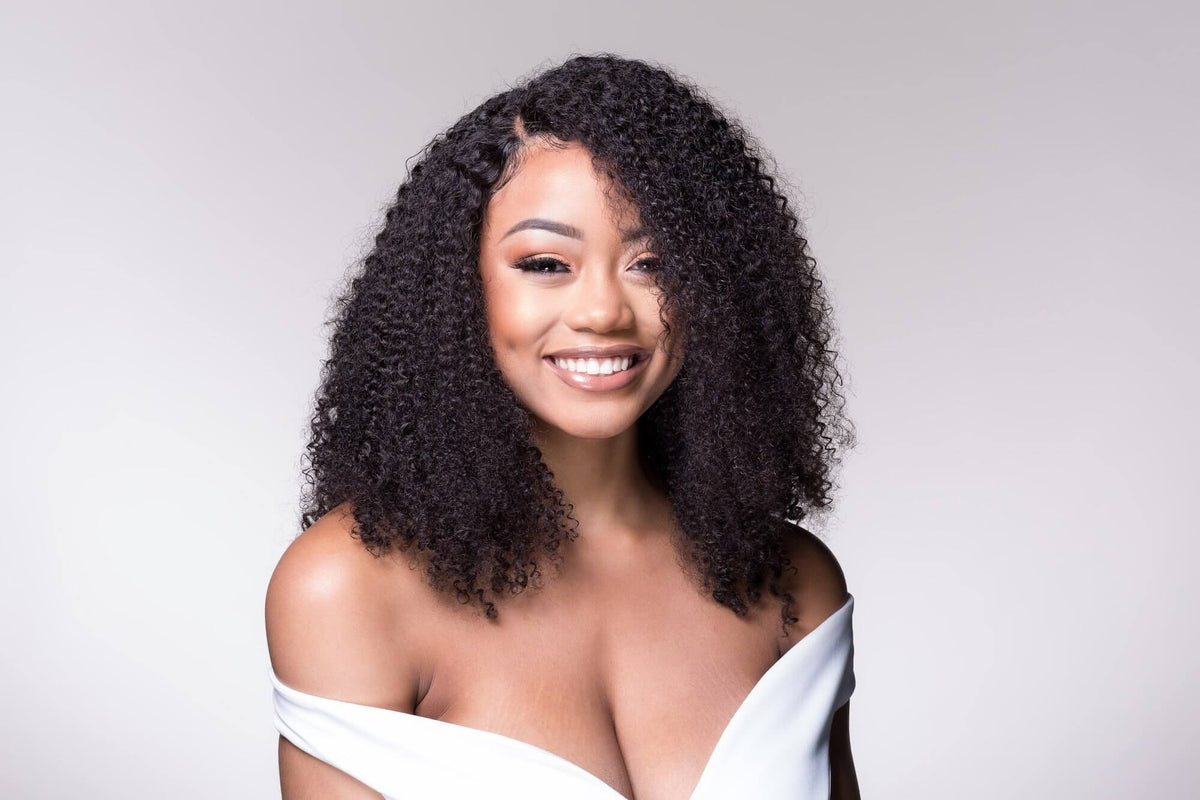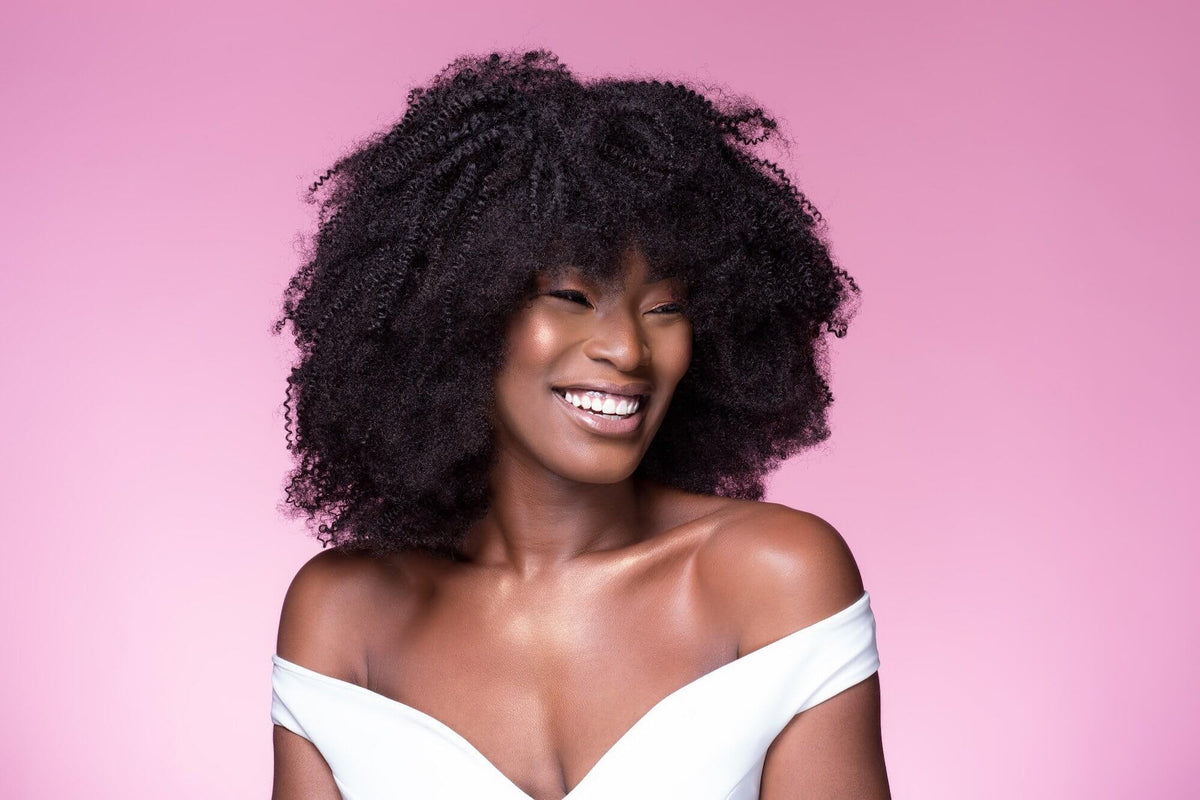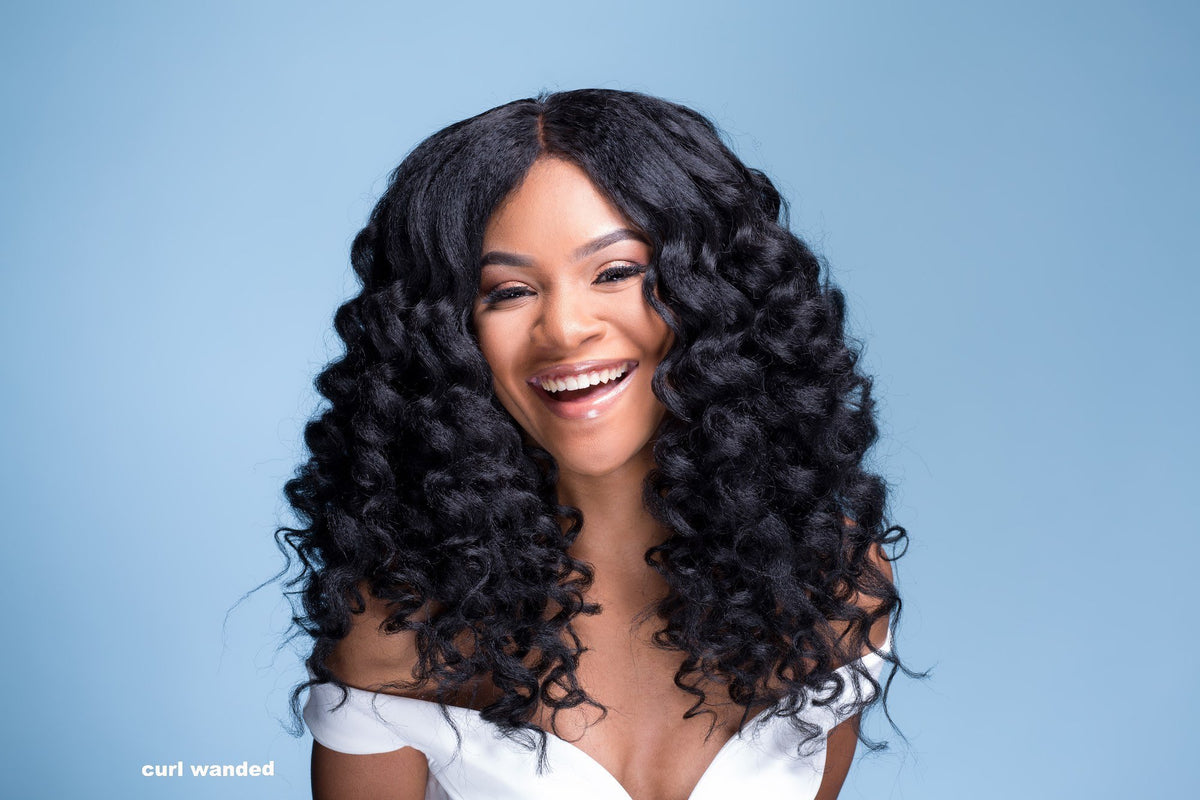
Natural hair extensions can be a good way to protect your own hair. Extensions give you the flexibility to wear beautiful hairstyles that braids and crotchet twists can’t provide. With so many hair options today it can become difficult to know which natural hair extension style is best for you.
Do you want a style that you can easily wear in a ponytail or will you be rocking free flowing tresses instead? Are you in the mood for a curly or straight crown?
When choosing hair extensions there are two things to consider:
- what type of hair you want
- how you want to apply it
In this complete guide we cover it all. The types of hair extensions and what to expect from each; as well as how to apply them without damaging your own crown. Some types of natural hair extensions should be avoided. While others are long lasting and worthy of the investment. Naturally, there are many that settle nicely in between, so we point those out too.
Types of Hair Extensions
Natural hair extensions are created to give you a beautiful hairstyle that offers reliable volume and fullness. They should blend seamlessly with your own crown. Finding hair extensions that blend with your natural texture is tough. That is exactly why I created KinkyCurlyYaki (KCY). However, there are tons of hair extensions types on the market today. Here's an overview of them all to help you choose.
Synthetic
Synthetic hair is mainly made in Japan. It is a soft plastic that cannot be heated with blow dryers or flat irons. To style or curl it is always a bit tricky and usually involved hot water. At KCY, we refer to synthetic extensions as "what you see is what you get".
To preserve synthetic hair extensions it is best to wear them as they come. Avoid doing anything more than washing the extensions or adding a bit of shine. Synthetic styles are easily tangled and very unforgiving once the plastic fiber strands begin to unravel.
These extensions remain one of the most popular choices because they require minimal styling and are the most affordable. Synthetic hair can last 4 to 6 months with good care. (But I've only ever gotten to two months.)
Human
Human hair extensions look more natural, is very versatile, and tends to tangle less than synthetic hair - sort of. You can dye, bleach, perm, straighten, and curl human hair. These extensions are mostly created from donors of Brazilian, Indian, Malaysian, and Peruvian descent.
Human hair extensions are usually affordable. When caring for your human hair agitated or rigorous washing is an absolute no-no. Instead, simply swish your human hair extensions through a sink full of warm water and let them air dry whenever possible.
Similar to your own crown, heat styling is the fastest way to destroy human hair extensions. So use heat with caution.
Brazilian
Brazilian hair provides you with thick and wavy curls. It is also the best type of hair extension to color. If you love color and highlighting Brazilian extensions are up for the task and will be so for a very long time. These extensions can last up to 2 years with proper care.
They are strong and thick. Plus, they are also usually more tangle resistant.
Malaysian
Malaysian hair extensions has the best natural shine and gives you lovely curls and volume. However, its texture is fine and silky and does not blend as well with our natural African American hair texture.
Indian
Indian hair extensions are very lightweight and easy to style. They are naturally wavy, but can be purchased straight or curly. These extensions are one of the thickest types of hair and does not tangle or shed very often. Indian hair holds a pretty curl and is heat tolerant - to a point.
Indian extensions are best worn as wigs, because the texture is not always easy to blend with our own texture. Indian hair holds up to washing and other styles like ombre styles impressively.
Peruvian
Peruvian hair extensions are durable and up for most hairstyle you set your sights on. It is very soft and has more of a coarse texture which enables these tresses to blend well with our African American hair texture.
These extensions are often more expensive because they are considered more rare than other types of human hair.
Styles of Hair Extensions
If you have been wearing or exploring hair extensions you likely have come across the terms Yaki and Remy. Many people believe that Yaki hair is another type of hair extension, but the term refers to the hairstyle itself, not the origin of the hair used in the extensions.
Yaki. Yaki hair extensions are chemically straightened, loose hair strands that come from a variety of donors. It can be processed to be silky, kinky, coarse, or straight. Yaki hairstyles are available in both synthetic or human hair varieties.
Remy. Remy hair extensions describe where the extensions come from. Remy means that the hair comes from the same donor. So the strands and hair pattern naturally lays in the same direction. Remy hair is noticeably more style tolerant and tangles less.
If you like to style your hair extensions than remy hair is for you. It holds up to dyes, bleaching, and heat fairly well. Remy hair extensions can land near the top of your budget, however, these extensions have been known to last for up to 2 to 3 years.
How to Apply Natural Looking Hair Extensions
After choosing the type of hair extensions that fit your lifestyle and needs, you have to decide on how you want them to be applied. Every application is different. Applications take different amounts of time to apply, have varying price points, and can be worn for a certain amount of time.
Strand by Strand
The strand by strand method is applied by using either hot or cold fusion. Both of these are some of the most expensive and time consuming methods. The strand by strand method involves taking up to twenty to thirty strands of your own hair and applying the extensions to them. This application method is the most natural out of all hair applications and can last for up to 6 months with proper care.
Keratin Bond (Hot Fusion). Keratin bond application is the first type of strand by strand. This application uses Keratin U-tip bonds. These bonds are lined with silicone that protects your natural hair when the bonds are heated. To attach the extension, your hair is placed in between the U-tip and the stylist uses a hot tool that melts the bond and seals the U-tip around your hair.
This extension works well on thick hair and can last for up to six months. Average application time is six to eight hours. You should avoid applying oils and over-styling hair with this application method.
Micro-Links/ I-Tip (Cold Fusion). Micro-links application is the second type of strand by strand method. This method is ideal if you prefer strand by strand but do not want to risk damaging their own hair with heat. An I-tip is a small bead that is lined with silicone to protect your natural hair. It must be clamped shut with a special tool.
Cold fusion can last up to six months and, unlike the other method, this hair can be reused and reapplied if they slip off. Average application time is four to six hours. This method is best for thick hairstyles to prevent the beads from being visible.
Tape In
Tape in application is simple and straightforward and requires natural hair extension bundles. The weft (track) of the extensions is covered with single-sided or double- sided tape. With double-sided application, two wefts create a “sandwich” around the hair. One side of the weft is attached to the hair and the other weft is applied to the other side of the tape.
Single-sided tape is used if have thinner hair and is only attached to the hair. The price of this application varies and can be low to medium priced. This application takes less than an hour but the tape needs one to two days to fully cure. As it cures you must avoid water or heavy sweating during that time. It is also important to remember to avoid oil-based products. Tape in application lasts for up six to eight weeks.
Glue In
For glue in application glue is applied to the weft, also known as the track, and attached to hair. This method should be done by a professional, because if the application or removal is done improperly it can cause extreme hair damage such as being ripped from your scalp. This takes an average of one to two hours and is one of the least costly applications.
Sew In
Sew in application is a favorite and preferred protective style for many. For sew in hairstyles you will need to purchase bundles of natural hair extensions. To use this application the stylist will first braid your natural hair to allow the extensions to have place to be sewn into. The extensions are then sewn into your hair using a threaded needle. This application takes three to four hours on average to complete and is one of the most affordable ways to have extensions put in.
Clip Ins or Flip Ins
Clip ins application uses clips while flip ins application uses silk wire. Both are applied with a small amount of pressure onto the hair. These extensions are removed at night before you go to bed. This application is best for medium to thick hair and takes less than thirty minutes on average. It is one of the least expensive applications to get more volume and fullness.
Conclusion
Natural hair extensions are a great option for protecting your hair while exploring various hair styles. Natural hair extensions come in a variety of options for different budgets, hair types, and preferences. It is important to remember that you should always follow your stylist’s directions to get the longest wear out of your extensions. Also remember that with proper care quality hair extensions can be worn for up to three years depending on the type of hairstyle and application.



